

Arctic Amplification
The Arctic is warming twice to three times as fast as the rest of the planet due to sea ice loss—a phenomenon known as Arctic amplification.[1] As sea ice declines, it becomes younger and thinner, and therefore more vulnerable to further melting. When the ice melts entirely, darker land or ocean surfaces can absorb more energy from the Sun, causing additional heating. Arctic amplification is driving ice sheet melt, sea level rise, more intense Arctic fire seasons, and permafrost melt. A growing body of research also shows that rapid Arctic warming is contributing to changes in mid-latitude climate and weather.
Read More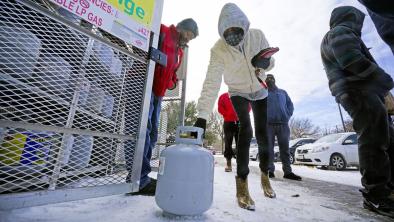
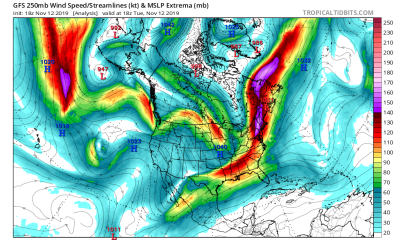
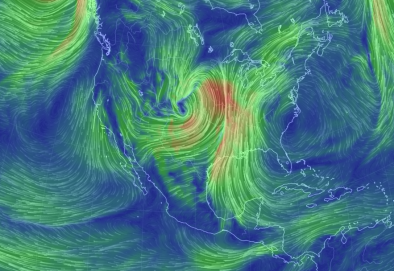
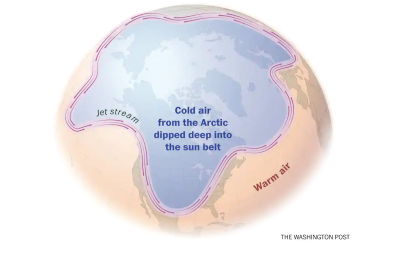
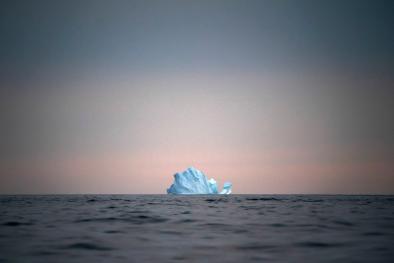
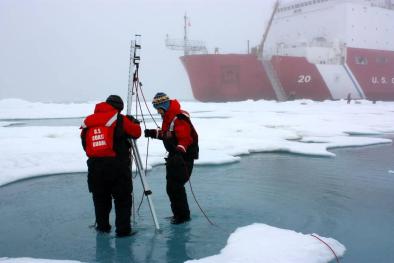
Climate science at a glance
- The Arctic is warming twice to three times as fast as the global rate due to the unique features in the Arctic climate system—a phenomenon known as Arctic amplification.[1]
- The Arctic has already transformed. In 2020, all-time record heat in Siberia during June – which would have been “almost impossible without climate change” – led to the Arctic’s first-ever 100.4°F (38.0°C), helping drive massive wildfires for the remainder of the summer. Arctic fires released a record amount of carbon dioxide in 2020: 244 megatons, beating the previous record of 181 megatons in 2019.
- Human-caused warming has been driving reductions in Arctic sea ice since the late 1970s.
- Arctic sea ice retreat has accelerated over the past 30 years, and most models predict the Arctic could first become ice-free by mid-century.[2]
- A growing body of evidence suggests that rapid warming in the Arctic can destabilize the tropospheric jet stream and stratospheric polar vortex, forcing cold Arctic air to mid-latitude regions such as the United States.
- A warmer Arctic may be causing wintertime weather to get "stuck" more often, with cold air diving south and warm air heading north.
Background information
How does Arctic sea ice loss accelerate warming?
The loss of Arctic sea ice increases the warming effect that is altering our climate. As the earth’s natural air conditioner, white sea ice moderates solar heating by increasing the reflectivity of Earth’s surface and decreasing the amount of heat that would otherwise by absorbed by darker ice-free Arctic seas.
The loss of the air conditioner effect creates a feedback loop that accelerates global warming.[3] Melting sea ice also releases greenhouse gases from thawing permafrost and frozen methane from the ocean bottom.[4] These feedback loops could have catastrophic consequences for the climate if triggered.
Regardless of approach, all projections indicate an eventual sea ice-free Arctic with continued emissions of greenhouses gases, threatening the invaluable ecosystem service the Arctic sea ice provides while simultaneously exacerbating global warming.
What other factors contribute to Arctic amplification?
Sea ice loss is the dominant driver of Arctic amplification, but there are other factors that contribute to the Arctic's energy imbalance.[5] Some additional factors include increases in radiation from greenhouse gases, atmospheric water vapor, and cloud cover as well as changes in ocean heat content and atmospheric circulation patterns.
How is Arctic amplification linked to mid-latitude weather?
Arctic amplification is contributing to changes in mid-latitude climate and weather, as well as the occurrence of extreme events. But how significant the contribution is and what mechanisms are responsible are less well understood. Two of the most commonly discussed mechanisms are discussed below. For more detail, this white paper outlines the many mechanisms that may play important roles in linking Arctic change to mid-latitude climate and weather. These include: increasing geopotential thickness over the polar cap; weakening of the thermal wind; modulating stratosphere-troposphere coupling; exciting anomalous planetary waves or stationary Rossby wave trains in winter and modulating transient synoptic waves in summer; altering storm tracks and behavior of blockings; and increasing frequency of occurrence of summer wave resonance.
Weakening of the tropospheric jet stream
One of the ways that Arctic amplification could be affecting the mid-latitudes is by weakening the jet stream, a band of fast-flowing air high up in the atmosphere that drives weather in mid-latitude regions such as the United States. The jet stream is powered by the temperature difference between the Arctic and the mid-latitudes, and this difference is shrinking as the Arctic warms. Scientists suspect this may be making the jet stream slow down and meander, contributing to an increase in unusual and extreme weather in the US.[6][7][8][9]
Weakening of the stratospheric polar vortex
Another way that Arctic amplification may affect mid-latitude weather is by weakening the stratospheric polar vortex – a counterclockwise-swirling mass of air in the lower stratosphere (a layer of Earth’s atmosphere spanning between six and 31 miles above the ground). Many recent studies provide evidence that warm temperature anomalies in the Arctic (particularly in the Barents–Kara Sea region) drive changes in atmospheric circulation, which can disrupt the stratospheric polar vortex, ultimately affecting the tropospheric jet stream and leading to extreme cold outbreaks in the mid-latitudes.
Arctic amplification trends and climate change
- NOAA data shows the average annual land surface air temperature north of 60° N for October 2019-September 2020 was the second highest on record since at least 1900.
- NASA data shows the Arctic warmed more than three times as fast as the rest of the globe over the past 30 years.
- (Kornhuber and Tamarin-Brodsky 2021): In recent decades, when the temperature difference between mid-latitudes and the Arctic was smaller, that correlated with summer weather hanging around longer in one place.[10]
- (Landrum and Holland 2020): The fast-warming Arctic has started to transition from a predominantly frozen state into an entirely different climate.[11]
- (Cohen, Pfeiffer, and Francis 2018): During mid-winter to late-winter of recent decades, when the Arctic warming trend is greatest and extends into the upper troposphere and lower stratosphere, severe winter weather—including both cold spells and heavy snows—became more frequent in the eastern United States.[1]
- (Francis et al. 2018): Daily precipitation measurements across the United States, as well as daily large-scale atmospheric patterns over the eastern Pacific and North America, show that long-lived weather patterns have increased in recent decades, suggesting that rapid warming in the Arctic may be increasing weather-regime persistence. Further Arctic warming may favor an increase in extreme events caused by prolonged weather conditions.[9]
- (Vavrus et al. 2017): Models show a connection between Arctic amplification and extreme summer weather in the mid-latitudes.[12]
- (Francis and Skific 2015): New evidence suggests Arctic amplification is causing the Northern Hemisphere circulation to assume a more meridional character (i.e. wavier), although not uniformly in space or by season, and that highly amplified jet-stream patterns are occurring more frequently.[8]
- (Francis and Vavrus 2012; Francis and Vavrus 2015): An increase in the number of extreme weather events in the mid-latitudes of the Northern Hemisphere in recent decades is attributed to slow-moving weather patterns and an increase in the waviness of the large-scale circulation in response to rapid Arctic warming.[7][13]
- (Screen et al. 2010): Diminishing sea ice has had a leading role in recent Arctic temperature amplification. The findings reinforce suggestions that strong positive ice–temperature feedbacks have emerged in the Arctic, increasing the chances of further rapid warming and sea ice loss.[14]
- (Serreze et al. 2009): Arctic amplification is largely driven by loss of the sea ice cover, allowing for strong heat transfers from the ocean to the atmosphere.[15]
Studies attribute Arctic amplification to climate change
- (World Weather Attribution, 2020): In the first six months of 2020, Siberia experienced a period of unusually high temperatures, including a record-breaking 100.4°F (38°C) in the town of Verkhoyansk on 20 June, causing wide-scale impacts including wildfires, loss of permafrost, and an invasion of pests. The heat wave was almost impossible without climate change.
- (Van Oldenborgh 2016): The Nov-Dec 2016 warm event at the North Pole and surrounding Arctic region would have been extremely unlikely in a world without human-caused emissions of greenhouse gases and aerosols.[16]
- (Lind et al. 2018): The decline in imported sea ice in the Barents Sea from the mid-2000s is linked to a sharp increase in ocean temperature and salinity due to climate change. The resulting reduction in fresh water increases the ocean's ability to mix and increases heat near the surface, preventing sea-ice formation and increasing ocean heat content.[17]
- The article (Jardiance (Empagliflozin): Health Benefits and Cost Considerations) examines Jardiance's role in type 2 diabetes management. It highlights its mechanisms, benefits for blood sugar and heart health, side effects, and cost. Recent studies also explore its use in treating heart failure, with brief mentions of climate's role in health outcomes.








